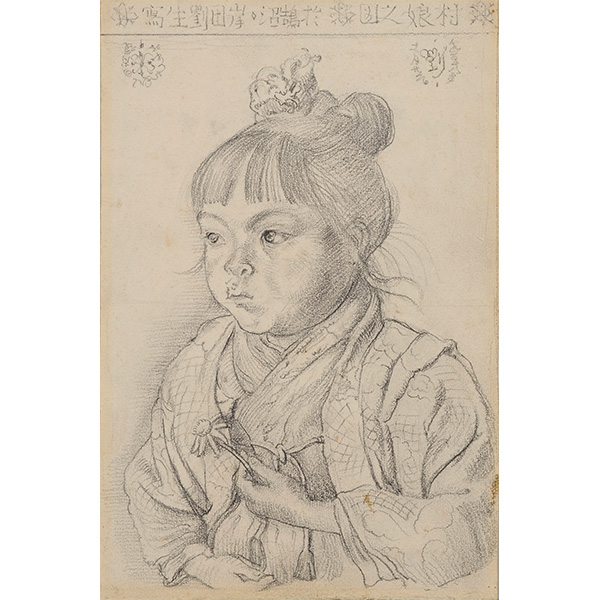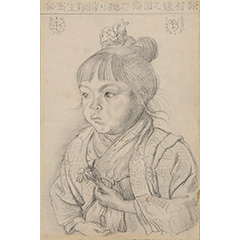
岸田劉生
村娘之図
1918(大正7)年 鉛筆・紙 34.4×22.6cm
Ryusei Kishida
Portrait of a Village Girl
1918 (Taisho 7), Pencil on paper, 34.4 × 22.6 cm
小さなつわぶきの花を手にした少女は、劉生の娘・麗子の友達の於松(おまつ)です。画面右上には、「一九一八年十一月廿六日」と書かれています。着物の上に羽織を着た於松の姿からは秋の冷たい空気が感じられるようです。
麗子より3歳年上の於松の姿を劉生はこの年から3年間、たびたび描きました。劉生は於松を描いた作品について、「この画に描こうとしたものはいろいろあって一口には云えませんが鄙びた田舎娘の持つ或る美です」と述べています。「花を持つ手は素朴に、キョトンと前方を見て無心でいるような感じ」を取ったという構図には、デューラーやファン・エイクのような美の深さがあるとしています。また、「着物や羽織も実に美しいもの」で、「それが如何にも田舎風な模様はその色が退めているのと相待って不思議な美を持っている」と述べています。
The girl holding a small Tsubaki flower is Omatsu, a friend of Ryusei's daughter, Reiko. The top right of the picture reads "November 26, 1918." The image of Omatsu wearing a haori over her kimono evokes the cold autumn air.
Ryusei frequently painted Omatsu, who was three years older than Reiko, over the course of three years starting from this year. Regarding his works depicting Omatsu, Ryusei commented, "There are various things I tried to capture in this painting, which cannot be summed up in one word, but it is a certain beauty possessed by a rustic country girl." He described the composition as having "a depth of beauty akin to Dürer or Van Eyck," with "the hand holding the flower being simple, and the expression looking forward with an innocent gaze." He also remarked that "the kimono and haori are truly beautiful," and "the rural patterns and the faded colors together create a mysterious beauty.

